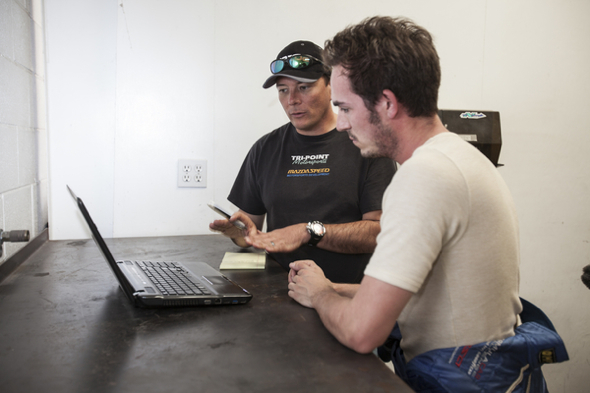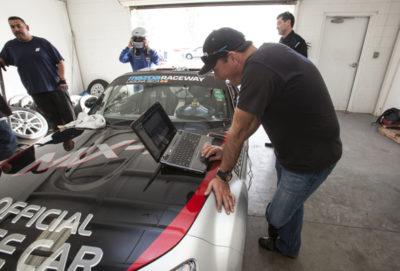Most of the young drivers who made it to the final rounds of the Mazda Club Racer Shootout have some experience with data. They’ve seen it, they’ve used it and usually understand it. For some experiencing data acquisition for the first time, though, it can be a little confusing. It shouldn’t be, says Eric Foss.

“Data is something that to me is pretty black and white, but everyone sees things differently,” he says. Foss was working with the competitors at the Club Racer Shootout on data, both determining how much they knew about it and how they used it, plus giving a little guidance in the process. “The biggest key I hope for is the kids realize that there is a tool in the car that can help them assess what they’re doing with their hands and their feet and how they’re really driving the car. If they take that into consideration and they really try to optimize what they’re doing, they can improve their laps and their feedback on what the car is doing.”
The advent of GPS- and accelerometer-based data acquisition systems has made the information more accessible to club racers. Figuring out what to do with it can be intimidating, but the first use is often to figure out of the driver is really using the car to its full potential.
“For someone first working with data, recognize that you don’t need to be a rocket scientist to figure it out. There are some very fundamental essentials to it – using the acceleration features and the speed trace to see how they really are using the peak points of the car. Just doing a little research on how a car works and what those fundamentals are,” says Foss, a professional driver coach.
“You have to recognize that there’s been a lot of information given on just the friction of a tire and how a tire works through its braking process, through its cornering process and acceleration, and recognize that by using the g forces in the tire, you can really see if you’re optimizing the tire and using all of it. The accelerometer will allow them to see if they’re actually achieving those peak gs, and see if they’re actually using the brake 100 percent, how they’re steering the car and transitioning from brake to steering input.”
It’s the last item that Foss believes many drivers are lacking. The throttle pedal is the fun one and he says most drivers have quickly learned throttle control to push the car to and, sometimes just for the thrill, over the limit. “But we very seldom have perfected how we balance the car with the brake. I think focusing on the brake traces and how you’re effectively using the brake and how you’re using it to transition into a corner, more importantly, is really going to help you be much more precise with getting the most out of the car.”
The discovery process of using data acquisition intrigues Foss, and it’s the thing that keeps him coming back – the fact that there’s always something to be found. You can always find something that you did better or optimized more, he says.
“Just being able to have that tool there really can be that little difference that will set you apart from another driver when it comes time.”


 ACCESSIBILITY
ACCESSIBILITY